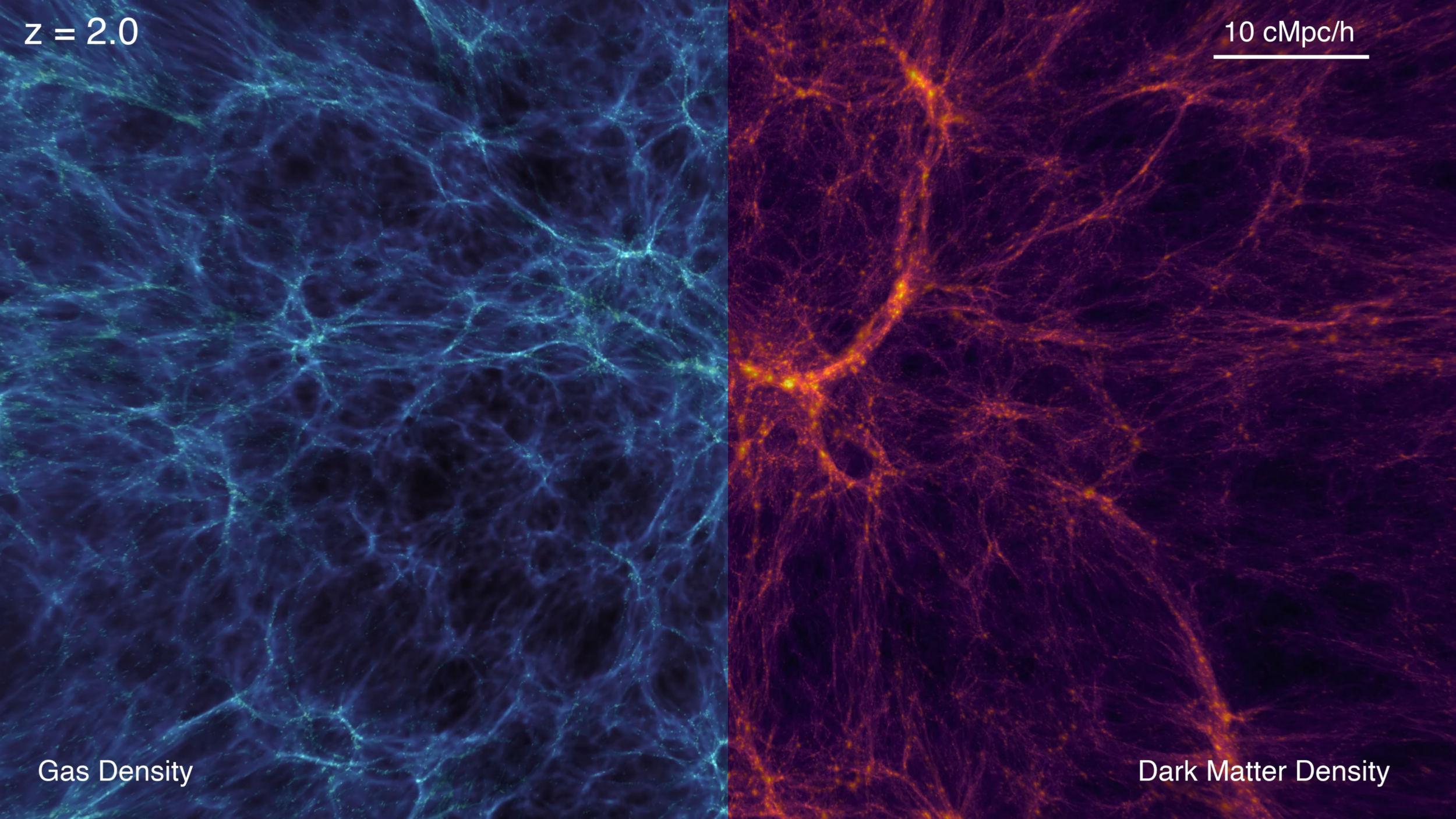
Simulating the large-scale structure in the Universe.
Cosmological Simulations
Hydrodynamical cosmological simulations allow us to build and test models that describe the evolution of the Universe and the matter on it. These simulations evolve the dynamics of the dark matter and gas in a very large volume and by comparing their properties of the “cosmic web” in the simulations to the observations we build our understanding of the cosmos and the astrophysics that shapes it.
High-Performance Cosmology
To have an accurate representation of the Universe, we need to simulate large boxes with high-resolution, making these calculations very computationally demanding. On top of that, we need to simulate a large variety of physical models to identify those that better reproduce reality. Running thousands of high-resolution simulations becomes a colossal task that only can be accomplished by using the most powerful supercomputers in the world.
Motivated by this, I spent the first half of my Ph.D. extending the GPU native hydrodynamics solver Cholla to run cosmological simulations by adding several physics (gravity, dark matter, cosmology, H+He chemistry and cooling). Today Cholla is a powerful tool for cosmology as it runs ~100x faster than regular CPU codes and it can take advantage of the largest supercomputers in the world which are powered by GPUs.
The animation below shows a Cholla simulation that was run on Summit at Oak Ridge National Lab, the largest supercomputer in the U.S.
Visualizing the Cosmos
I always try to extend the value of the simulations by rendering visualizations that demonstrate the physics and the evolution of matter in the universe. I use originally developed software to make all the visualizations and images presented here.
The animation below shows the evolution of the gas and dark matter density as well as the temperature of the gas in the cosmic web.


